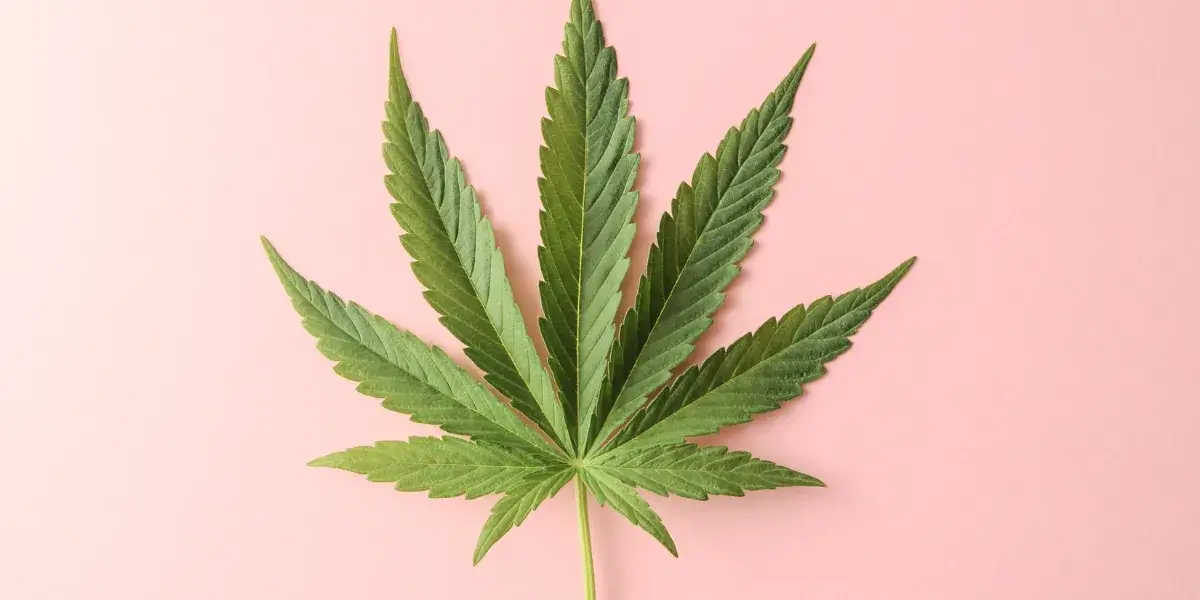Beyond its recreational usage, cannabis has many other benefits and applications, earning it the reputation of being a hidden gem.
Cannabinoids such as CBD have been shown to have therapeutic promise, providing relief from inflammation, anxiety, and pain.
Cannabis also appears to be promising in the treatment of PTSD, epilepsy, and even cancer symptoms.
Its numerous applications, which range from chronic pain management to skincare, are still developing.
Accept the all-encompassing advantages of this marvel of flora and investigate its many applications for enhanced health and life quality.
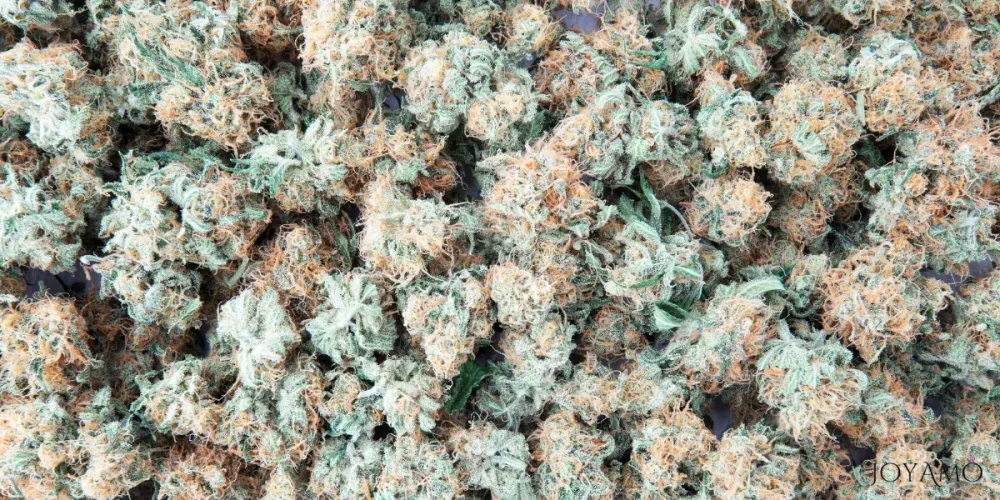
A. The Potential of THCa
THCa, also known as acid serves as a precursor to THC (tetrahydrocannabinol) within raw cannabis plants that have not been processed.
Unlike THC, THCa does not cause intoxication meaning it does not induce the mind-altering effects associated with using cannabis.
To activate its potency, THCa must undergo decarboxylation, often achieved through heat.
Understanding THCa holds significance in the realm of cannabis for reasons.
Firstly, THCa plays a role in unlocking the benefits of cannabis.
Studies indicate that THCa possesses properties, such as anti-inflammatory, neuroprotective, and antiemetic effects.
Moreover, there is potential for using THCa in treating conditions like pain, epilepsy, and nausea.
The presence of THCa in strains of cannabis is increasingly acknowledged for its influence on consumer experiences and preferences.
Strains high in THCa content are favored by medical marijuana users seeking relief from symptoms without experiencing the intoxicating effects of THC.
Additionally, strains rich in THCa are valued by users looking to explore the nuanced effects and flavors of cannabis beyond getting high.
In essence, gaining an understanding of THCa offers insights, into the characteristics and uses of cannabis.
By checking into the chemistry and advantages of cannabis we have the opportunity to discover avenues, for individuals using it for purposes or leisure influencing the direction of cannabis studies and usage in the years to come.
📌 THCa Properties
| Aspect | Description |
|---|---|
| Definition | Tetrahydrocannabinolic acid (THCa) is a precursor to THC found in raw cannabis plants. |
| Chemical Structure | THCa has a similar structure to THC but lacks the psychoactive properties of THC. |
| Importance in Cannabis | THCa plays a significant role in the therapeutic potential and effects of cannabis. |
| Conversion to THC | THCa requires decarboxylation, typically through heat, to convert into THC and become active. |
| Medical Applications | Research suggests THCa may have anti-inflammatory, neuroprotective, and antiemetic properties. |
| Consumer Preferences and Experience | THCa content in cannabis strains impacts consumer preferences and the overall experience. |

B. The Chemistry of THCa: Understanding Its Composition and Properties
THCa, or tetrahydrocannabinolic acid, is a cannabinoid compound found abundantly in raw cannabis plants.
Its molecular structure and composition contribute to its unique properties and effects.
At a molecular level, THCa shares a similar structure to THC (tetrahydrocannabinol), the psychoactive compound found in cannabis.
However, THCa contains an additional carboxyl group (COOH) attached to its molecular chain, distinguishing it from THC.
This carboxyl group is responsible for THCa’s non-intoxicating nature, as it prevents the compound from binding effectively to cannabinoid receptors in the brain.
THCa is synthesized within the trichomes of cannabis plants, where it accumulates in large quantities, particularly in the flowering stage.
Through a series of biosynthetic pathways, precursor molecules are enzymatically converted into THCa within the glandular trichomes.
This process involves the action of enzymes such as CBDA synthase, which catalyzes the conversion of cannabigerolic acid (CBGA) into THCa.
The differences in chemical properties between THCa and THC are significant.
While THCa is non-intoxicating and lacks psychoactive effects, THC is renowned for its psychoactive properties, eliciting euphoria, relaxation, and altered perception in users.
This distinction arises from the presence of the carboxyl group in THCa, which inhibits its ability to bind to cannabinoid receptors in the endocannabinoid system.
Gaining knowledge about THCa’s chemistry might help you better appreciate its special qualities and effects.
THCa is essential to the wide range of chemicals found in cannabis and how they interact with the human body, both in terms of their molecular makeup and synthesis in cannabis plants.
📌 The chemistry of THCa
| Aspect | Description |
|---|---|
| Molecular Structure | Similar to THC but contains an additional carboxyl group (COOH) |
| Synthesis in Cannabis Plants | Produced within the glandular trichomes of cannabis plants, particularly during flowering |
| Biosynthetic Pathways | Enzymatic conversion of precursor molecules, such as CBGA, by enzymes like CBDA synthase |
| Chemical Properties | Interaction with the Endocannabinoid System |
| Interaction with Endocannabinoid System | Inhibited binding to cannabinoid receptors in the brain, resulting in no psychoactive effects |
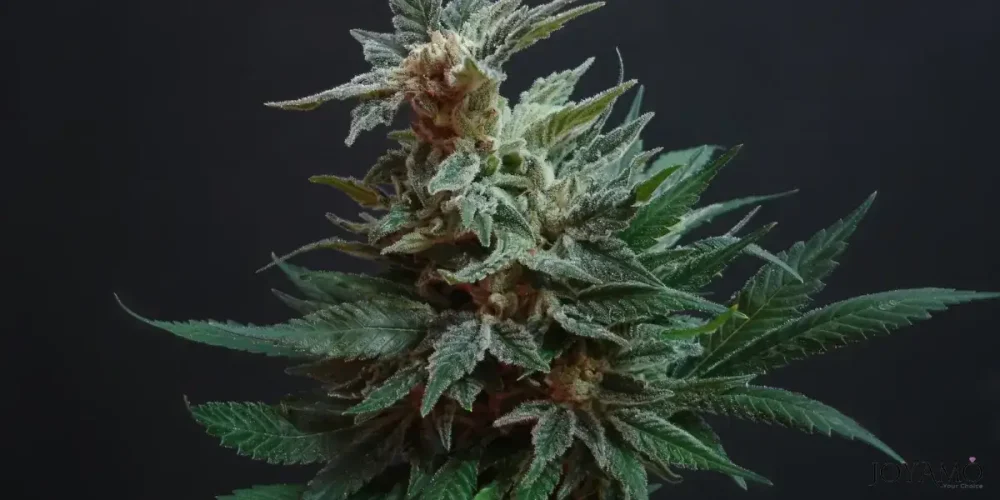
C. THCa vs. THC: Exploring the Contrasts
Tetrahydrocannabinolic acid, or THCa, and tetrahydrocannabinol, or THC, are two closely related chemicals that are present in cannabis and have different properties and effects.
Comprehending the distinctions between THCa and THC is essential to appreciate the intricacy of cannabis chemistry and its consequences for human ingestion.
✏ Chemical Structure and Effects
The only structural difference between THCa and THC is that THCa has a carboxyl group (COOH). Because of this carboxyl group, THCa is non-intoxicating and does not have the psychotropic effects that are often connected to cannabis use. On the other hand, because THC does not have a carboxyl group, it can attach itself to cannabinoid receptors in the brain and provide feelings of relaxation, pleasure, and altered perception.
✏ Decarboxylation Process
The process known as decarboxylation is what turns THCa into THC. THC is created when heat is applied to cannabis, such as when it is smoked, vaporized, or cooked. This process removes the carboxyl group from THCa. Decarboxylation can start at lower temperatures with extended exposure, but it usually happens at temperatures above 200°C (392°F).
Carbon dioxide (CO2) is released when the chemical connection between the carboxyl group and the remainder of the THCa molecule is broken by heat energy during the decarboxylation process. THCa is changed into THC by this mechanism, which activates THC’s psychoactive effects. Consequently, THC levels in decarboxylated cannabis products—such as edibles, concentrates, or dried flowers—are higher and can have euphoric effects when ingested.
In conclusion, THCa and THC are two different stages in the cannabis life cycle, each having a unique chemical makeup and set of effects.
Although THCa is not euphoric and needs to be decarboxylated to become THC, THC is psychoactive and causes the euphoric effects that are frequently linked to cannabis use.
📌 Comparison between THCa and THC
| Aspect | Formed from THCa through the decarboxylation process | THC (Tetrahydrocannabinol) |
|---|---|---|
| Chemical Structure | Non-intoxicating does not produce psychoactive effects | Lacks a carboxyl group, making it psychoactive |
| Psychoactive Effects | Non-intoxicating does not produce psychoactive effects | Psychoactive, produces euphoria and altered perception |
| Conversion Process | Requires decarboxylation to convert into THC | Naturally occurs in mature cannabis plants |
| Common Source | Abundant in raw, unprocessed cannabis plants | Non-intoxicating does not produce psychoactive effects |
| Legal Status | Generally legal due to its non-intoxicating nature | Regulated or prohibited in many jurisdictions due to its psychoactive effects |
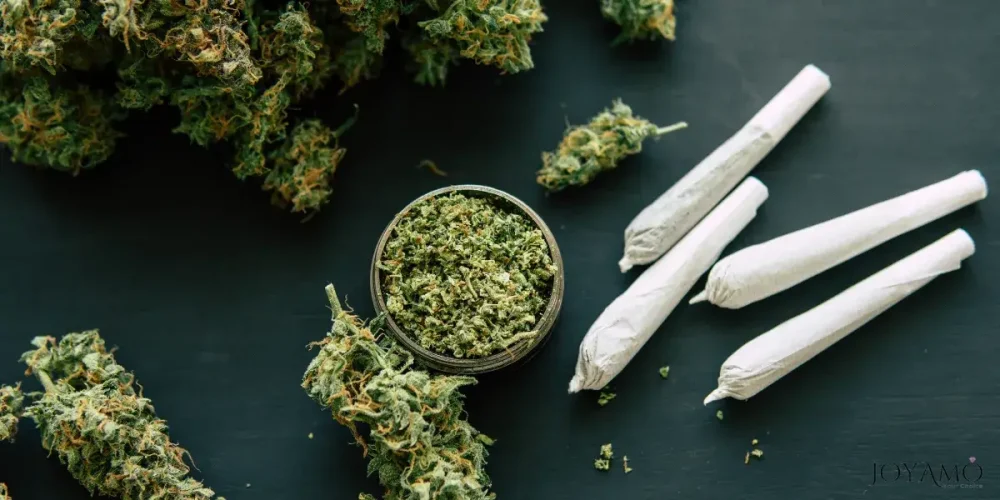
D. Exploring the Therapeutic Potential of THCa
The potential therapeutic benefits of THCa also known as acid are being explored for treating a range of conditions.
Research, on the properties of THCa has uncovered discoveries highlighting its possible applications in healthcare.
Studies indicate that THCa may have inflammatory properties making it a promising option for addressing conditions marked by inflammation such as arthritis and inflammatory bowel disease (IBD).
Moreover, THCa could show effects offering hope for individuals dealing with diseases like Parkinson’s and multiple sclerosis.
Additionally, scientific investigations suggest that THCa might possess qualities, which could help in easing nausea and vomiting linked to chemotherapy or other medical issues.
Some research also hints at the role of THCa in managing pain potentially bringing relief to those enduring pain conditions.
While more research is necessary to grasp the capabilities of THCa and how it works in the body initial results are encouraging.
As researchers delve deeper into the potential of THCa it could prove to be an addition to the array of treatments available for diverse medical ailments.
This could pave the way, for healthcare options. Improved symptom management strategies.
📌 Potential medicinal benefits of THCa
✏ Anti-inflammatory Properties
- THCa shows potential in reducing inflammation, offering hope for conditions like arthritis and inflammatory bowel disease (IBD).
✏ Neuroprotective Effects
- Research suggests THCa may have neuroprotective properties, which could benefit individuals with neurodegenerative disorders such as Parkinson’s disease and multiple sclerosis.
✏ Antiemetic Benefits
- THCa exhibits antiemetic properties, making it valuable in managing nausea and vomiting associated with chemotherapy or other medical treatments.
✏ Pain Management
- Preliminary studies indicate that THCa may help alleviate pain, providing relief for individuals with chronic pain conditions.
✏ Potential for Further Research
- While current findings are promising, ongoing research is needed to fully understand THCa’s therapeutic potential and mechanisms of action.
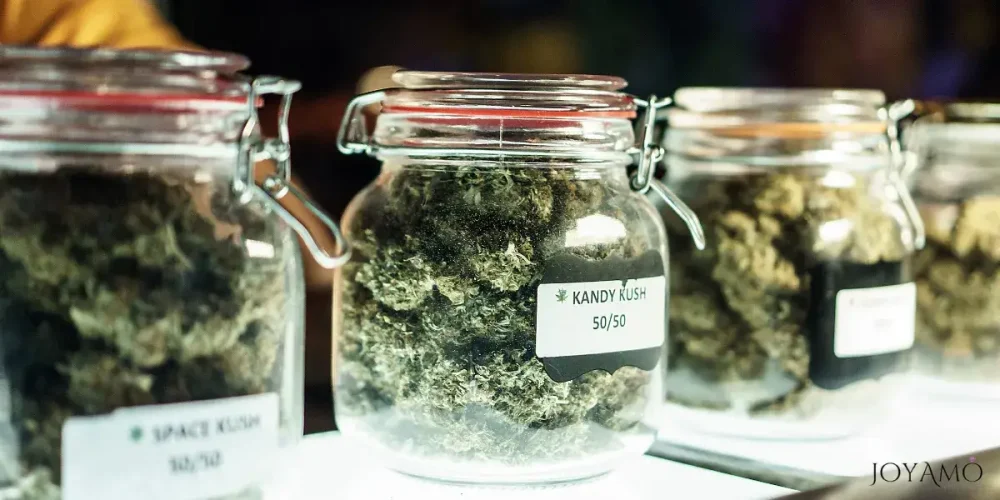
E. Exploring THCa Content in Cannabis Flower
THCa, also known as acid plays a role, as a cannabinoid found in its natural form within cannabis flowers. The amount of THCa present can differ across strains. Is influenced by multiple factors.
The levels of THCa in flowers are primarily dictated by factors with certain strains naturally containing higher concentrations than others.
Moreover, environmental elements such as cultivation conditions, soil quality, and climate can impact the levels of THCa present.
For example the method of cultivation – whether indoors, outdoors, or in a greenhouse – can affect the concentration of THCa observed.
Individuals seeking to harness the properties of THCa might prioritize strains with elevated percentages of this compound.
Such individuals may be interested in options that offer symptom relief for issues like pain, inflammation, or nausea without inducing effects.
Additionally, some consumers may favor strains rich in THCa for their tastes and scents as well as, for any potential synergistic effects they may provide.
In essence, the quantity of THCa found in flowers varies based on environmental factors.
Understanding these influences can empower consumers to make decisions when selecting strains based on their desired levels of THCa and potential therapeutic advantages.

F. Differentiating content of THCa from THC
It is important to measure the levels of THC and THCa, in products to understand how potent they are and what effects they may have.
While THC is known for its mind-altering properties THCa does not have these effects until it is heated. Knowing how these levels are measured and considering the potency of THCa are factors in using cannabis.
THCa and THC levels are often determined using testing methods like high-performance liquid chromatography (HPLC) or gas chromatography (GC) in laboratories.
These methods help to measure the amounts of cannabinoids in cannabis samples providing information for consumers and regulators.
Considering the potency of THCa is crucial for those looking for benefits without experiencing mind-altering effects.
High levels of THCa might suggest inflammatory, neuroprotective, or pain-relieving properties making products rich in THCa attractive to medical cannabis users.
Using cannabis with levels of THCa and THC can lead to varying effects.
Products with THCa content may provide relief from symptoms without causing a high while those with increased THC levels could induce feelings of euphoria and perception.
Understanding these distinctions allows consumers to select products that match their desired effects and health objectives.
In summary, understanding the variances between THCa and THC content empowers individuals to make decisions, about using cannabis.
When people take into account the potency and impact of THCa they can choose items that suit their tastes and requirements improving their enjoyment of cannabis and the potential health advantages.
📌 Differences in THCa vs. THC content
| Aspect | THCa (Tetrahydrocannabinolic Acid) | THC (Tetrahydrocannabinol) |
|---|---|---|
| Measurement | Typically measured in percentage of total cannabinoids in raw cannabis flower | Measured in percentage of total cannabinoids in decarboxylated cannabis products |
| Potency Consideration | Importance of considering THCa potency for non-intoxicating therapeutic effects | Consideration of THC potency for psychoactive effects and intoxication |
| Effects on Consumption | Consumption may offer potential therapeutic benefits without psychoactive effects | Consumption may induce euphoria, altered perception, and psychoactive effects |
| Lab Testing Methods | Analyzed using high-performance liquid chromatography (HPLC) or gas chromatography (GC) | Analyzed using similar laboratory techniques for cannabinoid quantification |
| Regulatory Considerations | Regulated differently in various jurisdictions due to non-intoxicating nature | Often subject to legal restrictions or regulations due to psychoactive effects |
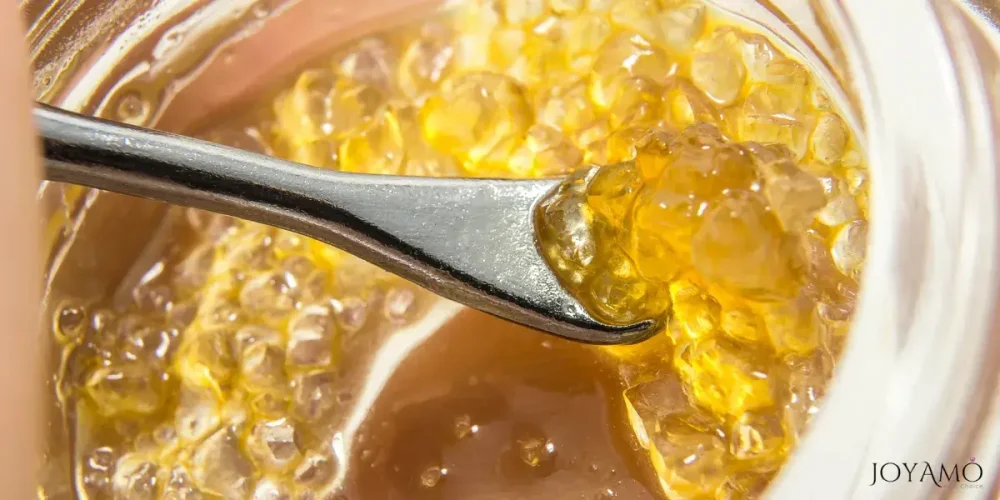
G. Understanding THCa and THC Levels in Cannabis Flower
The levels of THCa and THC found in cannabis buds play a role, in determining how potent they are. The effects they may have.
It is important to have labeling and testing procedures in place to give consumers information about potency allowing them to make well-informed choices.
Analyzing the levels of THCa and THC involves using laboratory techniques like high-performance liquid chromatography (HPLC) or gas chromatography (GC).
These methods help measure the concentrations of cannabinoids in cannabis samples ensuring that potency information is precise.
Accurate labeling is vital for conveying THCa and THC levels to consumers. Clear and standardized labels enable consumers to make decisions based on their preferences and tolerance levels.
Additionally, rigorous testing helps ensure compliance with regulations and quality standards which ultimately enhances consumer safety and trust in the product.
Consumers should take into account the THCa and THC content when selecting cannabis products based on their desired effects.
Individuals seeking benefits without intoxication may opt for products with THCa levels while those looking for psychoactive effects may prioritize products with higher THC potency.
Understanding these factors empowers consumers to choose products that align with their needs and preferences ultimately enhancing their cannabis experience.
Accurate labeling and thorough testing of THCa and THC levels are crucial for providing consumers with information, about potency.
By taking these aspects into account people can make informed choices when picking out cannabis items according to the effects they want and their tolerance levels.
📌Comparison between THCa and THC in cannabis flowers
| Aspect | THCa (Tetrahydrocannabinolic Acid) | THC (Tetrahydrocannabinol) |
|---|---|---|
| Chemical Structure | Similar to THC but contains a carboxyl group (COOH) | Lacks a carboxyl group, making it psychoactive |
| Psychoactive Effects | Often regulated differently due to the non-intoxicating nature | Psychoactive, produces euphoria and altered perception |
| Conversion to Active Form | Requires decarboxylation to convert into psychoactive THC | Naturally occurs in mature cannabis plants |
| Measurement | Typically measured in percentage of total cannabinoids in raw cannabis flower | Measured in percentage of total cannabinoids in decarboxylated cannabis products |
| Therapeutic Potential | Potential therapeutic benefits without psychoactive effects | Potential therapeutic benefits with psychoactive effects |
| Legal Considerations | Often regulated differently due to the non-intoxicating nature | Subject to legal restrictions or regulations due to psychoactive effects |

💡 What is TCHa FAQs
✔ Is THCA as strong as THC?
Raw THCa, the parent compound of THC, has no psychoactive effects. Heat-induced decarboxylation yields THC, a psychoactive compound that gives users the familiar “high” associated with cannabis use.
✔ Can THCA cause a high?
No, THCA by itself does not give you a high. It doesn’t become psychoactive until it undergoes combustion or other decarboxylation reactions to produce THC.
✔ What percent of THCA turns into THC?
Typically, decarboxylation transforms 87.7% of THCA into THC, with a small amount remaining as THCV.
✔ What are the benefits of using THCA?
Potential therapeutic advantages of THCA include its neuroprotective, antiemetic, and anti-inflammatory qualities. It might lessen the symptoms of illnesses like nausea, neurological disorders, and arthritis.
✔ What is THCA and what does it do?
Raw cannabis contains a cannabinoid molecule called tetrahydrocannabinolic acid, or THCA. It is a precursor of THC and is not euphoric. When decarboxylated into THC, THCA turns psychotropic and may have medicinal benefits.
✔ Does THCA turn into Delta 9?
Yes, THCA undergoes a process known as decarboxylation in which heat causes the carboxyl group to be removed, forming THC and converting THCA into Delta-9-THC.
✔ Is THCA natural or synthetic?
One naturally occurring cannabinoid substance in the cannabis plant is called THCA. It is produced by the plant and found in its unprocessed state in nature.
✔ What’s the difference between THCA and Delta 8?
While delta-8-THC is a different cannabinoid molecule with unique properties, THCA is the precursor of THC. Delta-8-THC is psychoactive but supposedly less strong than Delta-9-THC, while THCA is not intoxicating until it is decarboxylated.
 SHIPPING
SHIPPING
